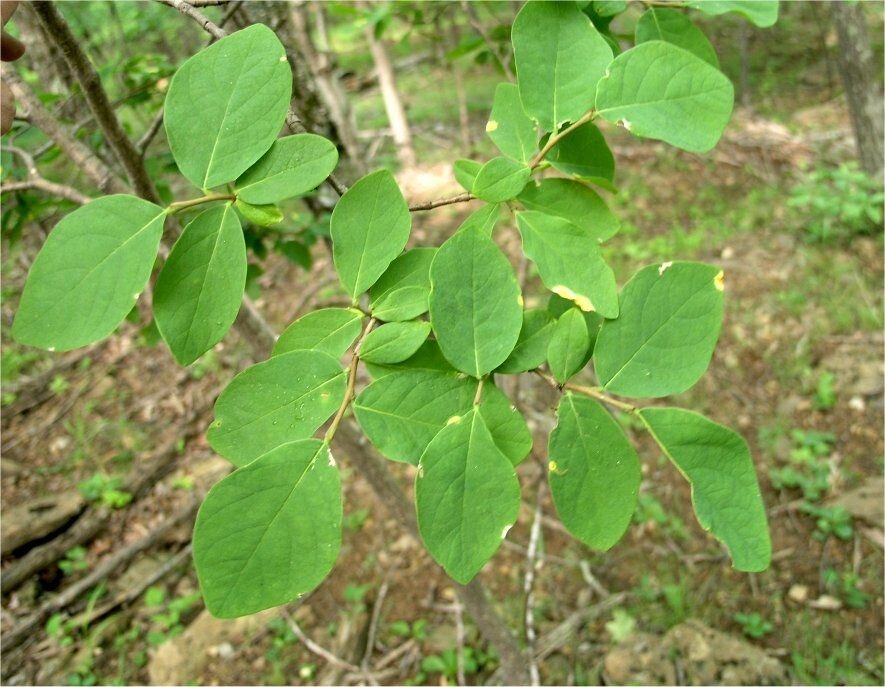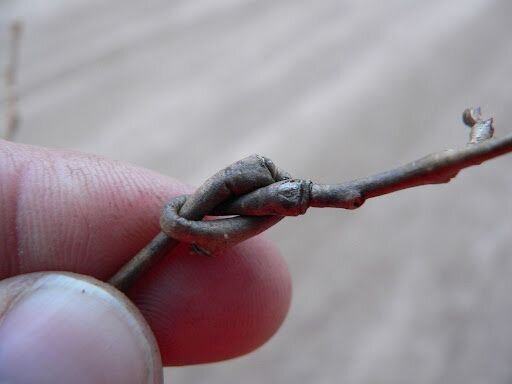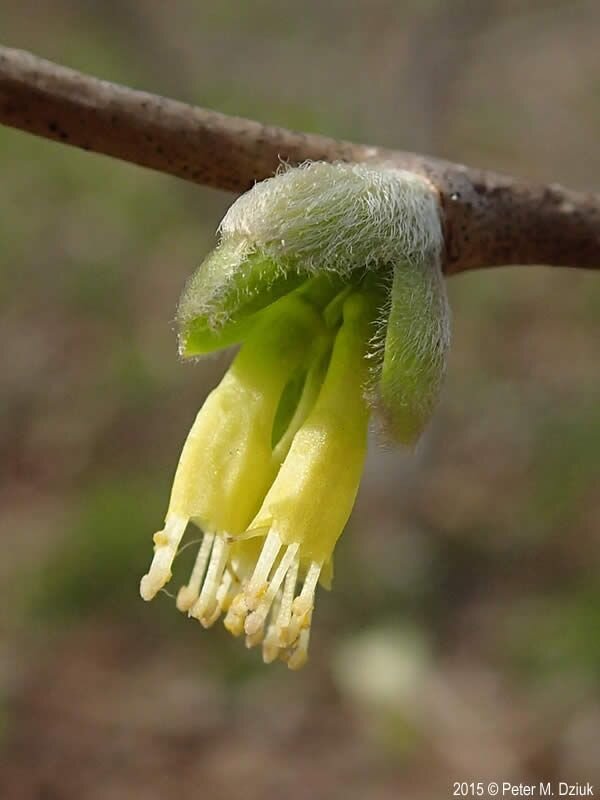
We collect basic website visitor information on this website and store it in cookies. We also utilize Google Analytics to track page view information to assist us in improving our website.
Written by: Bianca Marcellino

Getting its name from its uniquely tough yet malleable bark allowing it to be an ideal choice for weaving and cordage, Leatherwood (Dirca palustris) is a native woodland shrub with both medicinal and outdoor survival applications.
Leatherwood is a small to medium-sized shrub that grows deep in forests reaching heights of approximately 1 to 2.5 m and widths of 1 to 2 m. It is an extremely shade tolerant shrub that is able to thrive under dense forest canopy but can also perform well in sunnier landscapes. It is commonly found in deep parts of rich, moist woodlands that are heavily shaded and have moist, well-drained to wet calcareous soils.
 It is easily identified by its tough, jointed twigs that are pliable to the point of being able to be tied into a knot without breaking. It is also characterized by small yellow flowers that emerge before the leaves in early spring, arising from hairy buds in clusters of 2 to 6, but usually 3. Flowers are narrowly tubular in shape and pale yellow containing 4 shallow lobes, 8 long white stamens with yellow-orange tips protruding from the tube, as well as a slender white style extending past the stamens.
It is easily identified by its tough, jointed twigs that are pliable to the point of being able to be tied into a knot without breaking. It is also characterized by small yellow flowers that emerge before the leaves in early spring, arising from hairy buds in clusters of 2 to 6, but usually 3. Flowers are narrowly tubular in shape and pale yellow containing 4 shallow lobes, 8 long white stamens with yellow-orange tips protruding from the tube, as well as a slender white style extending past the stamens.
Bloom time occurs in early spring (March – April) before most other plants. Following these blooms, alternate oval to egg-shaped toothless leaves emerge. These leaves are 1½ to 3 inches long and 1-2 inches wide, often widest above the middle and blunt at the tip. They are usually hairless although the undersides may be hairy, especially when young. These leaves turn from a shiny green to a brilliant yellow colour in the fall. Following leaf emergence and subsequent maturity, green, oval, berry-like fruits are produced and ripen to a reddish-purple colour by early summer.
Leatherwood Quick Facts:

The early bloom time of Leatherwood of March to April, makes this shrub a critical source of nectar and pollen to various bees and butterflies by being one of the only food sources available to pollinators at this time of the year. In addition to providing food resources to pollinators, later in the season the ripened fruits are an important food source for many birds and small mammals. Species that the Leatherwood shrub can support include:
While Leatherwood has many important applications to both humans and animals, it is important to note that parts of the plant are toxic to humans. When touched, the leaves and especially the bark can cause skin irritation such as redness, blistering and sores. The plant also exhibits low toxicity if ingested and can cause symptoms such as vomiting, diarrhea and in some cases, an allergic reaction. While previously used as a traditional medicine by North American indigenous tribes for various ailments, it has been less commonly used in modern herbalism due to its toxicity and resulting unpleasant side effects and should only be used with extreme caution under the guidance of qualified herbalists or healthcare professionals.
As a result of its habitat and soil preferences, Leatherwood can grow in swamps and performs very well in wet areas along pond edges. In a cultivated setting, it will grow well in a shaded area with any garden soil with good moisture-holding capabilities. If you’ve been stumped by what to plant in that shaded area of your yard and are looking for an early-blooming shrub that will attract wildlife and promote pollinators, and can thrive with little to no regular maintenance, consider planting Leatherwood! Just remember that it needs to be kept in an area/provided with enough water to ensure the soil stays moist to wet the majority of the time.
Read more about this species on Network of Nature, here.
Further Reading:
Ontario Trees & Shrubs: https://ontariotrees.com/main/species.php?id=2056
Grow Native!: https://grownative.org/native_plants/leatherwood/
The Morton Arboretum: https://mortonarb.org/plant-and-protect/trees-and-plants/leatherwood/
Minnesota Wildflowers: https://www.minnesotawildflowers.info/shrub/leatherwood
Join our email list to receive occasional updates about Network of Nature and ensure you get the news that matters most, right in your inbox.